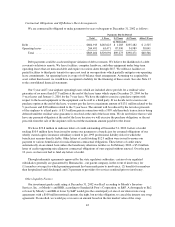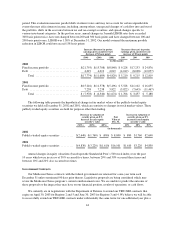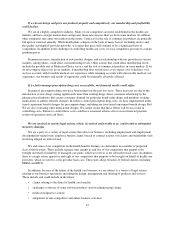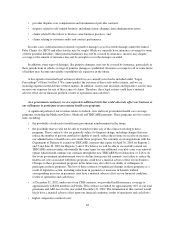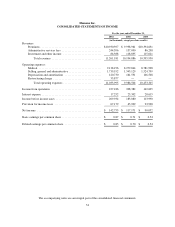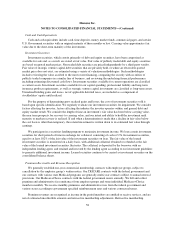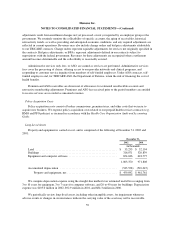Humana 2002 Annual Report Download - page 57
Download and view the complete annual report
Please find page 57 of the 2002 Humana annual report below. You can navigate through the pages in the report by either clicking on the pages listed below, or by using the keyword search tool below to find specific information within the annual report.On November 21, 2000, the Department of Labor published its final regulation on claims and appeals
review procedures under ERISA. The claims procedure regulation applies to all employee benefit plans governed
by ERISA, whether benefits are provided through insurance products or are self-funded. As a result, the new
claims and appeals review regulation impacts nearly all employer and union-sponsored health and disability
plans, except church and government plans. Similar to legislation recently passed by many states, the new ERISA
claims and appeals procedures impose shorter and more detailed procedures for processing and reviewing claims
and appeals. According to the Department of Labor, however, its ERISA claims and appeals regulation does not
preempt state insurance and utilization review laws that impose different procedures or time lines, unless
complying with the state law would make compliance with the new ERISA regulation impossible. Unlike its state
counterparts, the ERISA claims and appeals rule does not provide for independent external review to decide
disputed medical questions. Instead, the federal regulation will generally make it easier for claimants to avoid
state-mandated internal and external review processes and to file suit in federal court. The new ERISA claims
and appeals rules generally became effective July 1, 2002 or the first day of the first plan year beginning after
July 1, 2002, whichever is later. In any case, health plans must comply with the new rules with respect to all
claims filed on or after January 1, 2003.
We are also subject to various governmental audits and investigations. These can include audits and
investigations by state attorneys general, Centers for Medicare and Medicaid Services, or CMS, the Office of the
Inspector General of Health and Human Services, the Office of Personnel Management, the Department of
Justice and state Departments of Insurance and Departments of Health. These activities could result in the loss of
licensure or the right to participate in various programs, or the imposition of fines, penalties and other sanctions.
In addition, disclosure of any adverse investigation or audit results or sanctions could negatively affect our
reputation in various markets and make it more difficult for us to sell our products and services.
If we fail to maintain satisfactory relationships with the providers of care to our members, our business
could be adversely affected.
We contract with physicians, hospitals and other providers to deliver health care to our members. Our
products encourage or require our customers to use these contracted providers. These providers may share
medical cost risk with us or have financial incentives to deliver quality medical services in a cost-effective
manner.
In any particular market, providers could refuse to contract with us, demand higher payments, or take other
actions that could result in higher health care costs for us, less desirable products for customers and members or
difficulty meeting regulatory or accreditation requirements. In some markets, some providers, particularly
hospitals, physician/hospital organizations or multi-specialty physician groups, may have significant market
positions and negotiating power. In addition, physician or practice management companies, which aggregate
physician practices for administrative efficiency and marketing leverage, may, in some cases, compete directly
with us. If these providers refuse to contract with us, use their market position to negotiate favorable contracts or
place us at a competitive disadvantage, our ability to market products or to be profitable in those areas could be
adversely affected.
We currently are in negotiations with HCA Inc. regarding our contracts in Florida covering 30 hospitals,
which expire on April 30, 2003. Although we have included estimated hospital rate increases in our Commercial
premium rates and in our Medicare benefit designs, we are currently unable to predict the outcome of these
negotiations, but believe such outcome will not have a material impact on our financial position, results of
operations, or cash flows.
In some situations, we have contracts with individual or groups of primary care physicians for an actuarially
determined, fixed, per-member-per-month fee under which physicians are paid an amount to provide all required
medical services to our members (i.e. capitation). The inability of providers to properly manage costs under these
arrangements can result in the financial instability of these providers and the termination of their relationship
51



